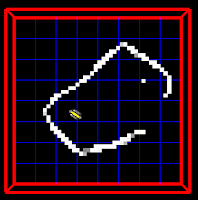One of the first things I thought of when reading these sources was how cultures have changed over time and how people’s loyalty to tradition has altered. Yet, even though cultures are constantly changing, we have a stereotypical view of how certain cultures are. For example, if I were asked to picture a Japanese family, the first scene I would think of is a big family sitting in an Asian style home with a small garden and pond and all the family members wearing kimonos and socks with sandals and eating sushi. Now I know that this is not the typical outfit of modern day Japanese people, however it is the image that I’ve always thought of first when thinking about Japanese culture.
I began thinking about how cultures have changed over time and why they do. I remembered a story my grandmother told me about her grandmother. Her grandmother was born and raised in Germany and came over to the United States. Once, during World War II, she went to the grocery store, my grandmother was with her. Two women became very cold and mean towards them both, because of her grandmother’s German accent, even going to the point of spitting on her.
When I talked about this with my grandmother, she said that there were many families who came over to the United States and tried to erase all traces of their previous cultures, in order to fit in, especially during wars. My grandmother remembers, that none of her mother’s family members were allowed to speak German anywhere while they lived in the United States, even going to the point that the children were not fully allowed to learn the language. Due to the fear of not assimilating into American culture, my family lost the part of its history and culture that came from Germany when my great-great-grandparents immigrated.
Lucena states in his article, “Culture as Dominant Images,” on page 1, “Dominant images create expectations about how individuals in that location are supposed to act or behave.” In my family’s case, in order to become more “American,” they tried to erase all the dominant images that were connected to the country they were born in.
De Courtivron’s article, “Educating the Global Student, Whose Identity is Always a Matter of Choice,” page 1, states “Today, young urbanized American men and women of 20 … are likely to have more in common with young Japanese men from Tokyo or young Turkish women from Istanbul than with their own grandparents.” Traditions aren’t being passed down as much anymore. There are less and less people that are embracing the cultures of their parents and grandparents. I believe this is mainly due to a changing world. With new technology, new ideas, and new concerns, the dominant images that were so central previously now hold little say in the current world. “The weight of the world used to be vertical; it used to come from the past, or from the hierarchy of heaven and earth and hell; now it is horizontal, made up of the endless multiplicity of events going on at once and pressing at each moment on our minds and our living rooms.” (De Courtivron, page 1)
This quote makes me visualize a line connecting many different people. In the past, the line was vertical with newer generations at the bottom and looking up to the generations of the past and seeing how they lived and worked. Now, I imagine the line horizontal, with people looking to their left and right, seeing what their neighbors are doing and not considering how their ancestors lived as much. This change in the “connection of people” is the changing of cultures and shifting of lifestyles.
In Hiller’s article, “Understanding Culture: The Discovery of the YEKOH Ritual,” page 228, he describes the SNAIDANAC people’s “ritual ironically creates divisions within the society at the same time that it provides the basis for general society identity and cohesion.” This tells me that these people realize that their ritual and culture is what makes them unique and a special race; however, it is also clashing with different ideas that coincide with a planet that is changing, evolving and moving forward.
I think culture is an interesting way of looking into people’s lives and their history. It makes me wonder how the changing of technology and people’s connections, will change the cultures people have. Culture, to me, is what makes a group of people unique from another group. But as the world moves forward and people become more global, meeting new people, ideas, and traditions, what will happen to independent cultures?

















